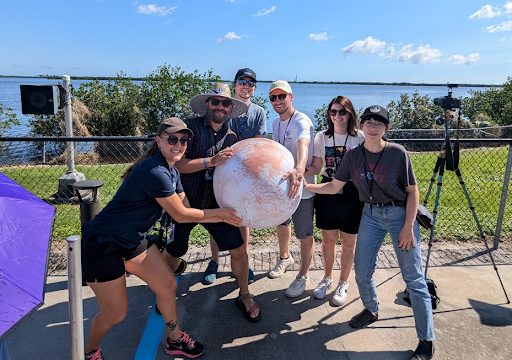The search for life beyond Earth is a major priority for planetary scientists, astrobiologists and agencies such as NASA. There is strong evidence that the ingredients for life — namely liquid water, carbon, and an energy source — may exist on Jupiter’s moon Europa within an enormous ocean beneath its icy surface.

As NASA’s Europa Clipper embarks on its 5.5-year journey to Europa, a new study in Nature Communications by University of Washington planetary scientist Baptiste Journaux reveals groundbreaking research that could revolutionize the search for habitability in our solar system and beyond. Journaux, with co-author and assistant professor Matt Powell-Palm at Texas A&M University, introduce a new thermodynamic concept called the “cenotectic,” or the lowest temperature at which a liquid remains stable under any conditions of pressures and concentrations. This is the first time in 140 years that a new thermodynamic point is defined for classic phase diagrams. Furthermore, according to the study, this fundamental concept has “fascinating applications in planetary science, especially for cold, water-rich worlds like icy moons of the outer solar system and ocean exoplanets.”
Icy moons such as Europa, Titan and Ganymede may serve as our most promising targets for exploring the presence of life beyond Earth. The search for extraterrestrial life has led to three major exploration missions to these icy worlds: NASA’s Europa Clipper and Dragonfly missions, and the European Space Agency’s Juice mission.
“One of the most significant discoveries in planetary science and astrophysics over the past decade has been the realization that icy moons hold the largest reservoir of liquid water in our solar system,” said Journaux. “For instance, Europa contains twice the amount of liquid water compared to all the oceans on Earth combined, while Titan and Ganymede are likely to contain over 10 times more liquid water each. Additionally, ocean exoplanets are believed to possess the largest reservoir of liquid water in the entire universe.”
Exploring the potential for life on distant icy worlds begins with understanding the possibility of liquid water. “Measuring the cenotectic helps us to establish limits on this possibility,” said Powell-Palm. Their findings offer a critical framework for interpreting data from planetary exploration efforts.

“With the launch of NASA Europa Clipper, the largest planetary exploration mission ever launched, we are entering a multi-decade era of exploration of cold and icy ocean worlds. Measurements from this and other missions will tell us how deep the ocean is and its composition,” said Journaux. “Laboratory measurements of liquid stability, and notably the lowest temperature possible (the newly defined cenotectic), combined with mission results, will allow us to fully constrain how habitable the cold and deep oceans of our solar system are, and also what their final fate will be when the moons or planets have cooled down entirely.”
However, the general consensus is that the limits of habitability for these moons and water-rich exoplanets ends where the presence of liquid water (or salty solutions) ends. This is where the groundbreaking discovery and definition of the cenotectic play a crucial role. “By providing an absolute limit to the existence of liquid water, including at high pressures and high salinities, cenotectic research enables us to establish an absolute limit on the presence of oceans and potentially habitable environments,” Journaux explained. “One of the major outcomes is that the cenotectic pressure is quasi constant, independently of the chemistry for the most interesting solutes in planetary science. Therefore, the cenotectic point will always be at the same depth for a given planetary body.”

Furthermore, cenotectic concepts also allow us to predict the final stages of an exoplanet’s ocean before it completely freezes. The study proposes that as large, water-rich planetary bodies cool over extended periods or lose their internal heat sources, their oceans gradually freeze from the surface and bottom until they become entirely solid. These final oceans are defined in the paper as cenotectic oceans. With this new concept, Journaux is able to predict the depth of this “end-game” ocean for various relevant moons, such as Ganymede, Callisto, and Titan, as well as for significant ocean exoplanets like Trappist 1e-g and water-rich rogue exoplanets.
The cenotectic has applications well beyond planetary science as well.
“While this research is important to planetary science and the search for life amongst the stars, this enhanced understanding of the thermodynamics of water at low temperature may be useful in a million other applications — from cryopreservation of human organs and tissues to advanced aircraft de-icing to industrial chemistry and beyond,” said Powell-Palm, whose expertise lies in cryobiology, initially focused on medical applications like organ preservation for transplantation.
The authors suggest the cenotectic could help define clear and fundamental limits for how different liquids mix together. There’s still a lot of exciting research to be done, and they suggest that future studies should focus on improving and exploring this idea further to better understand the physical limits of material systems.
For more information, contact Baptiste Journaux.
Related Articles: Salon // Texas A&M Press Release